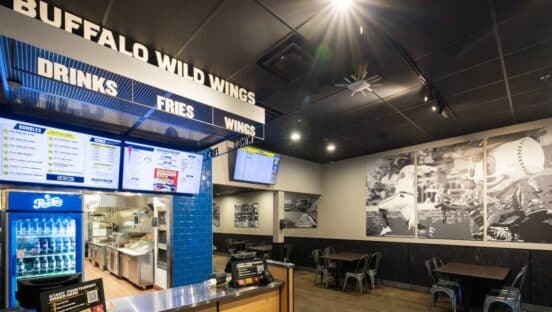The fast-food industry, like virtually all others, will be forever changed by the effects of the ongoing pandemic as professionals in this sector look for new, safer and healthier ways of working in the wake of these events.
Here’s a closer look at how fast-food establishments can prepare for opening as usual in light of COVID-19, putting hygiene at the forefront of their operations to keep customers and staff safe.
1. Extra vigilance with food handling and preparation
How food is handled and prepared has always been a key consideration when it comes to hygiene in the fast food industry. Cross contamination through different foods, surfaces and equipment can quickly cause the spread of harmful bacteria between foods, but with the right measures in place, it can be prevented.
As we begin to come out of the other side of the COVID-19 outbreak, restaurateurs need to ensure staff are well-versed in best practice for handling and preparing food, covering everything from using separate chopping boards and food prep areas for raw meats and cooked foods to storing different foods correctly and frequently washing hands and food prep areas.
Beyond the obvious food hygiene measures, fast food restaurants also need to be aware of the potential viral contamination risk that the coronavirus has in terms of handling food and equipment. While evidence suggests you’re more likely to be infected by contact with someone with the virus, scientific data also shows that the virus can live on different surfaces for long periods.
This means fast-food establishments will need to be extra vigilant when processing deliveries, removing outer packaging in a separate area and disinfecting surfaces afterwards, as well as thoroughly washing food and hands before touching other equipment or surfaces. This extra precaution should work to instill correct procedures across all aspects of food handling and preparation.
2. Optimized storage facilities
Another key ingredient for optimizing food safety in your restaurant is to reassess your food storage facilities. With your establishment’s doors having been closed for some months, equipment may well have been turned off to minimize overheads during non-operational periods.
However, just like anything that’s not used for a while, this inactivity has the potential to spark technical issues, so it’s best to allow yourself time before reopening to check and service equipment to ensure refrigerators, chillers and freezers are fully functioning to keep food at the right temperatures.
Within this process, take the time to review your storage capacity and cleanliness, too. With consumers potentially on high alert when it comes to hygiene, upgrading your shelving units with options that come with built-in antibacterial finishes and removable shelves that can be easily disinfected could be just what you need to bolster food storage safety.
Reviewing and improving your food storage areas also comes with the added benefit of contributing towards more streamlined operations. With a slick transition from food preparation to serving, customers can be served faster, minimizing the amount of time they spend in close contact with other people.
3. Exceptional general hygiene
Understandably, everyone is going to be far more conscious of hygiene than ever as we move forward into a post-coronavirus world. For fast food operators, this will mean even greater emphasis on general hygiene processes across the board, ensuring they’re doing everything within their power to prioritize best practices for cleanliness to keep patrons and staff members protected.
This should naturally include a thorough clean of all areas, both back and front of house, on a daily basis. As a rule, kitchen areas should always be subject to a thorough clean post-service to meet food health and safety standards, but extra vigilance should be applied here to ensure every inch of the kitchen is spotless.
Whether you have seated areas for guests to dine in or a simple serve-and-go set up, these front of house areas should also be well maintained. Brief staff on the importance of frequently wiping down countertops and equipment, as well as applying a policy to disinfect tables and chairs between each sitting using antibacterial cleaners. However, be sure dishcloths and towels used are regularly disinfected or laundered at high temperatures to reduce the chance of contamination.
From chefs to waitresses, you need to stress the importance of personal hygiene that spans beyond washing their hands regularly—making sure all employees are wearing clean clothing and footwear as germs and bacteria can remain viable on fabrics. You may also want to consider supplying staff with appropriate PPE such as gloves and masks to wear during food preparation and service and install antibacterial gel hand sanitizer pumps for staff and patrons to effectively boost hygiene throughout your premises.
There’s no doubt that normal life will return at some point, but in the wake of a global pandemic it’s likely that hygiene is going to be a major consideration, particularly within the fast food industry. However, by taking action with the above measures within your establishment, you can work to improve hygiene standards that will all go towards reassuring and protecting customers and staff during these unprecedented times.
Tom Brialey is the founder and director of Action Storage, which adopts his philosophy that, in addition to the highest quality products, you must also provide the highest standard of service to your customers in order to succeed. That’s why it’s Tom’s mission to provide expert support 100 percent of the way.












